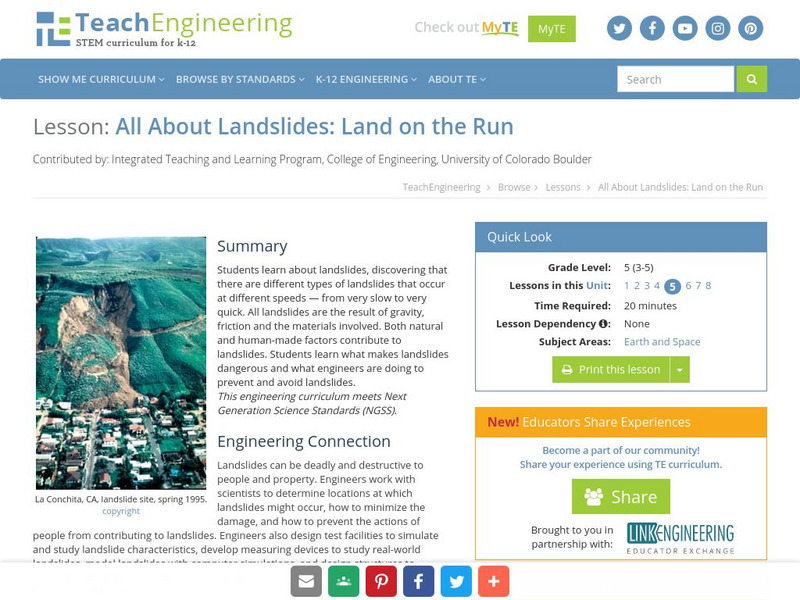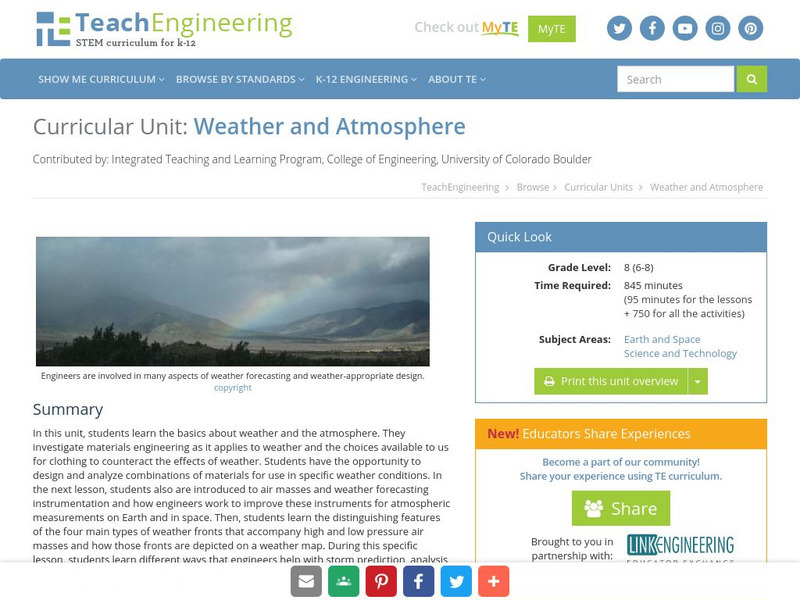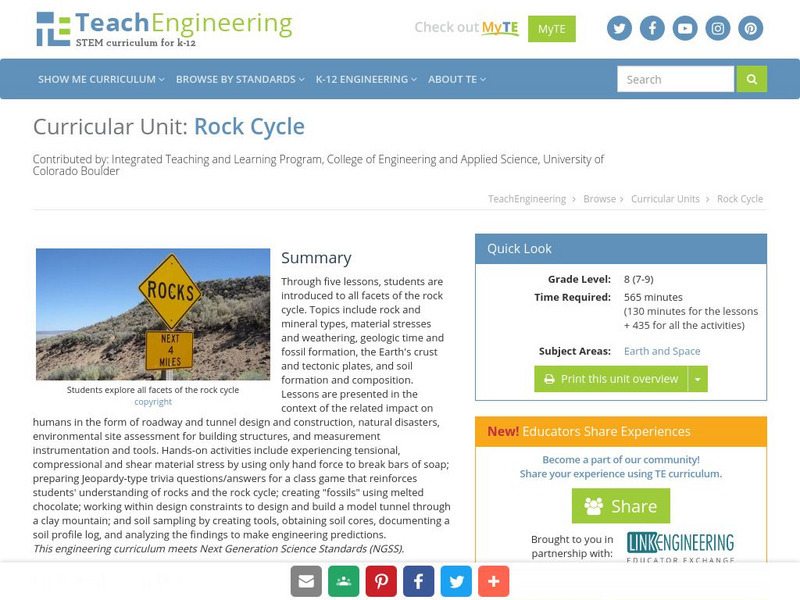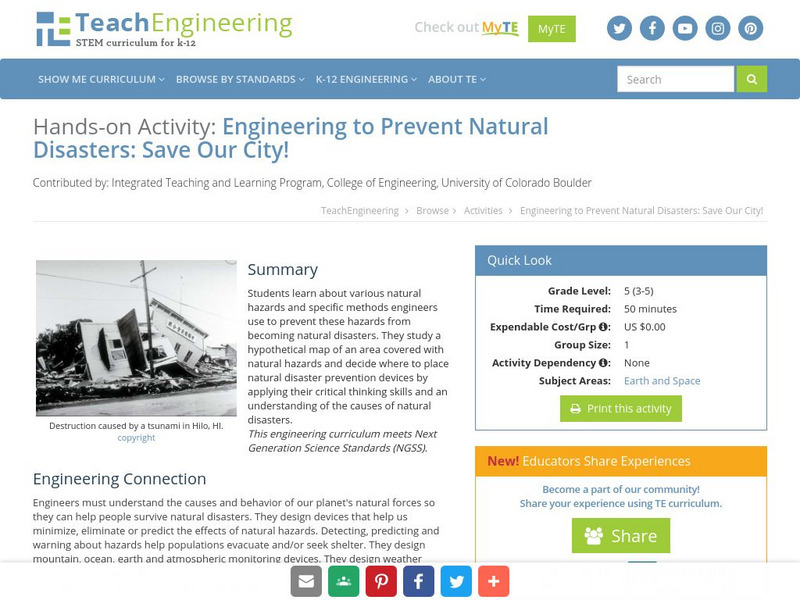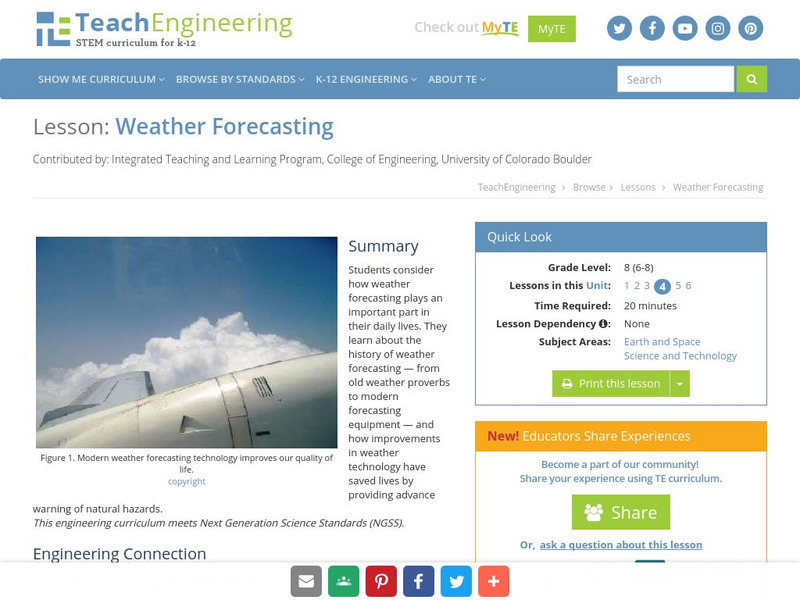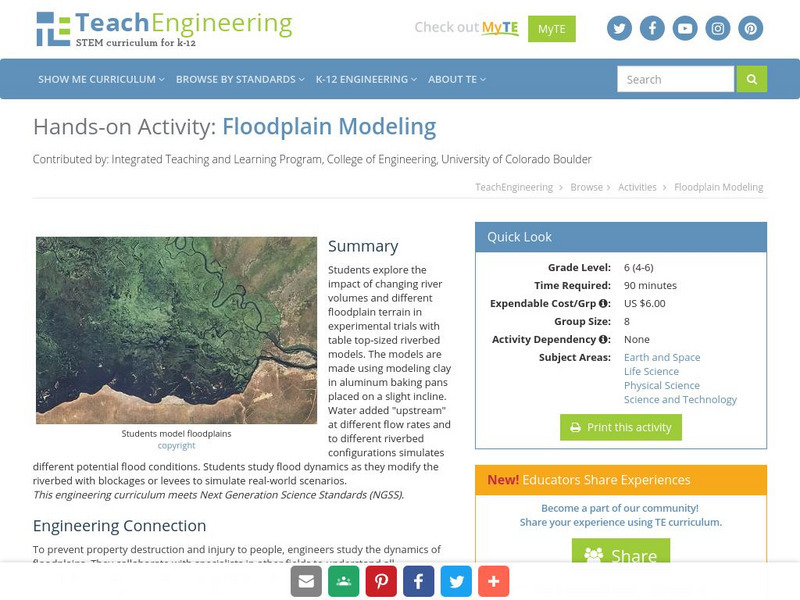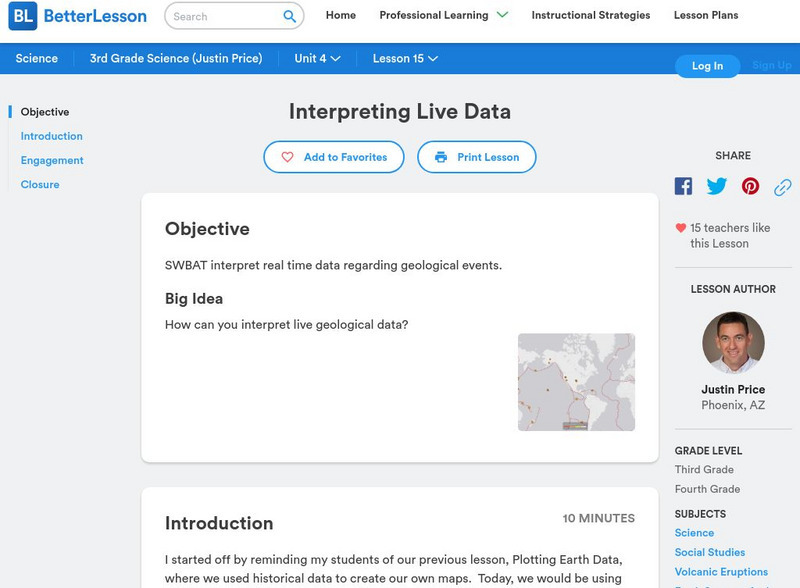TeachEngineering
Teach Engineering: Survive That Tsunami!
Students use a table-top-sized tsunami generator to observe the formation and devastation of a tsunami. They see how a tsunami moves across the ocean and what happens when it reaches the continental shelf. Students make villages of model...
TeachEngineering
Teach Engineering: Pump It!
Pumps are used to get drinking water to our houses every day! And in disaster situations, pumps are essential to keep flood water out. In this hands-on activity, student groups design, build, test and improve devices to pump water as if...
Choices Program, Brown University
Choices: Teaching With the News: Pakistan's Floods
Lesson with multi-media resources introduces students to the disaster in Pakistan after the devestating floods in 2010 and encourages them to consider the impact of history, climate vulnerability, and current politics as they attempt to...
TeachEngineering
Teach Engineering: Land on the Run
Students learn about landslides, discovering that there are different types of landslides that occur at different speeds - from very slow to very quick. All landslides are the result of gravity, friction and the materials involved. Both...
TeachEngineering
Teach Engineering: Weather and Atmosphere
In this unit, students learn the basics about weather and the atmosphere. They investigate materials engineering as it applies to weather and the choices available to us for clothing to counteract the effects of weather. Students have...
TeachEngineering
Teach Engineering: Making & Breaking: The Rock Cycle
Students learn the components of the rock cycle and how rocks can change over time under the influence of weathering, erosion, pressure and heat. They learn about geotechnical engineering and the role these engineers play in the...
TeachEngineering
Teach Engineering: Rock Cycle
Through five lessons, students are introduced to all facets of the rock cycle. Topics include rock and mineral types, material stresses and weathering, geologic time and fossil formation, the Earth's crust and tectonic plates, and soil...
TeachEngineering
Teach Engineering: Naturally Disastrous
Students are introduced to natural disasters, and learn the difference between natural hazards and natural disasters. They discover the many types of natural hazards - avalanche, earthquake, flood, forest fire, hurricane, landslide,...
TeachEngineering
Teach Engineering: Save Our City!
Students learn about various natural hazards and specific methods engineers use to prevent these hazards from becoming natural disasters. They study a hypothetical map of an area covered with natural hazards and decide where to place...
Science Education Resource Center at Carleton College
Serc: Disaster Dynamics
The goal of the Disaster Dynamics project is to create games that teach players about the interaction between natural hazards and human decisions.
TeachEngineering
Teach Engineering: Weather Forecasting
Students begin this instructional activity by considering how weather forecasting plays an important part in their daily lives. They learn about the history of weather forecasting -from old weather proverbs to modern forecasting...
TeachEngineering
Teach Engineering: Rock Solid
Rocks cover the earth's surface, including what is below or near human-made structures. With rocks everywhere, breaking rocks can be hazardous and potentially disastrous to people. Learners are introduced to three types of material...
Ready
Ready: Welcome to Ready Kids!
An engaging site developed by the Department of Homeland Security to teach students how to prepare for emergency situations. Loaded with learning activities, games, songs, lesson plans, and printable worksheets that are designed to help...
TeachEngineering
Teach Engineering: What's the Problem?
Students learn of the impending asteroid impact scenario, form teams and begin to study the situation in depth. A simple in-class simulation shows them the potential for destruction and disaster. They complete worksheets and look at maps...
TeachEngineering
Teach Engineering: Hurricanes
Students learn what causes hurricanes and what engineers do to help protect people from destruction caused by hurricane winds and rain. Research and data collection vessels allow for scientists and engineers to model and predict weather...
TeachEngineering
Teach Engineering: Floodplain Modeling
Students explore the impact of changing river volumes and different floodplain terrain in experimental trials with table top-sized riverbed models. The models are made using modeling clay in aluminum baking pans placed on a slight...
Choices Program, Brown University
Choices: Teaching With the News: The Haitian Crisis: Thinking Historically
Lesson from 2010 using multi-media resources, including video, audio, and primary sources which challenge students to think beyond the earthquake and consider the role of Haiti's rich history in the crisis.
PBS
Pbs Learning Media: Fast and Slow Changes on Earth's Surface
Observe fast and slow events that change the face of Earth's surface with this slideshow. Students will use evidence from videos and images to describe how changes on Earth's surface can happen quickly or slowly. Students will have the...
TeachEngineering
Teach Engineering: Tsunami Attack!
Students learn about tsunamis, discovering what causes them and what makes them so dangerous. They learn that engineers design detection and warning equipment, as well as structures that that can survive the strong wave forces. In a...
TeachEngineering
Teach Engineering: Volcanic Panic!
Students learn about the causes, composition and types of volcanoes. They begin with an overview of the Earth's interior and how volcanoes form. Once students know about how a volcano functions, they learn how engineers predict...
Better Lesson
Better Lesson: Interpreting Live Data
Students will be using live data about volcanoes and earthquakes to look for patterns and understand why natural disasters may or may not be able to be predicted. Resources include helpful websites, a video of the lesson in action,...
Better Lesson
Better Lesson: Protect My Home!
Young scholars create a model using materials to build a barrier or protective wall to prevent your home from flooding during a storm surge.





